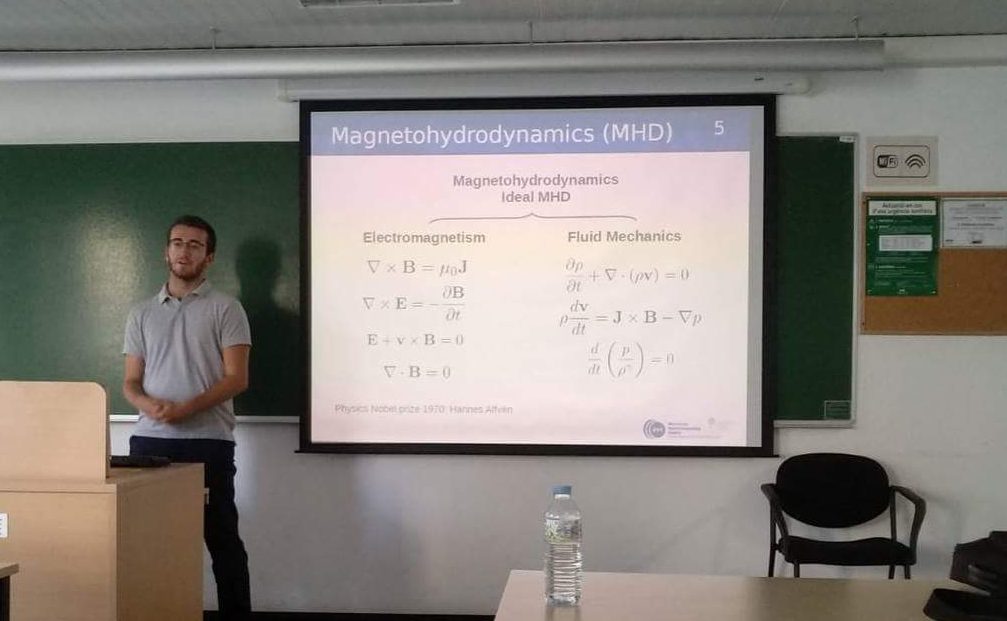
Our Fusion group member Marc Fuster has successfully presented his final Bachelor thesis in Physics entitled “Application of the Edge-Based Finite Element Method for fusion plasma simulation” based on the work he has been carrying out since last August in our group under supervision of Dr Shimpei Futatani. The defense took place at the Faculty of Sciences of Universitat Autònoma de Barcelona, Spain.
Marc wants to thank the whole group for support and valuable advise during his internship.
Abstract of Marc’s thesis:
Fusion is a clean energy source which is a promising future nuclear energy resource. One of the conditions of the nuclear fusion on Earth is to confine very high temperature ionized particles forming a plasma with magnetic field lines. However, the magnetically confined plasma is not an equilibrium system which leads to a complicated dynamics. Its spatio-temporal dynamics is not easy to model.
The goal of the work is to asses the feasibility of the development of a useful computational tool for fusion applications based on edge elements, which is a preferable numerical scheme for electromagnetic physics including plasma physics.
The development uses the infrastructures of the Parallel Edge-based Tool for Geophysical Electromagnetic Modelling (PETGEM) which is a Python HPC scalable tool based on edge finite element method. This code is used to solve the so called Marine Controlled-Source Electromagnetic method (CSEM) which is an important technique for reducing ambiguities in data interpretation for hydrocarbon exploration. Finite element method (FEM) and both its nodal and edge version are explained in this thesis along with a comparison of both methods and the reasons why the edge elements are more suitable for electromagnetic problems. The indexing and formulation of edge FEM is explained as well as the assembly and the solver used in PETGEM. This work contains a tutorial on how to use PETGEM which is the result of the learning process of the multiple simulations carried out. The mesh generation and refinement is achieved using Gmsh software. The implementation and the benchmark of different physical initial profiles are achieved through parallel simulations in Marenostrum supercomputer.
